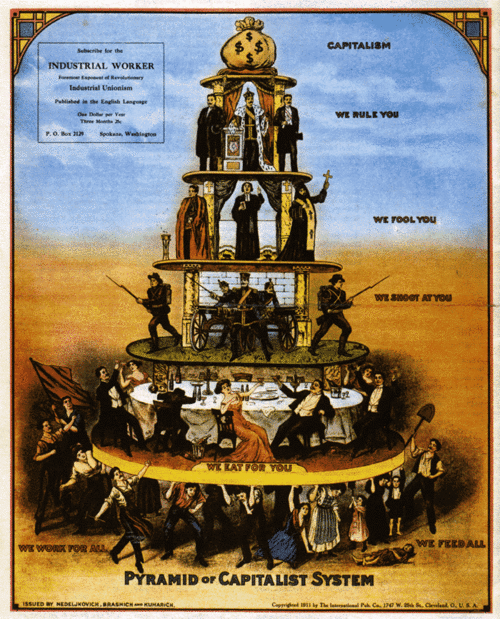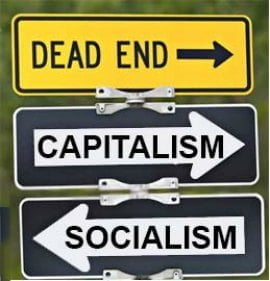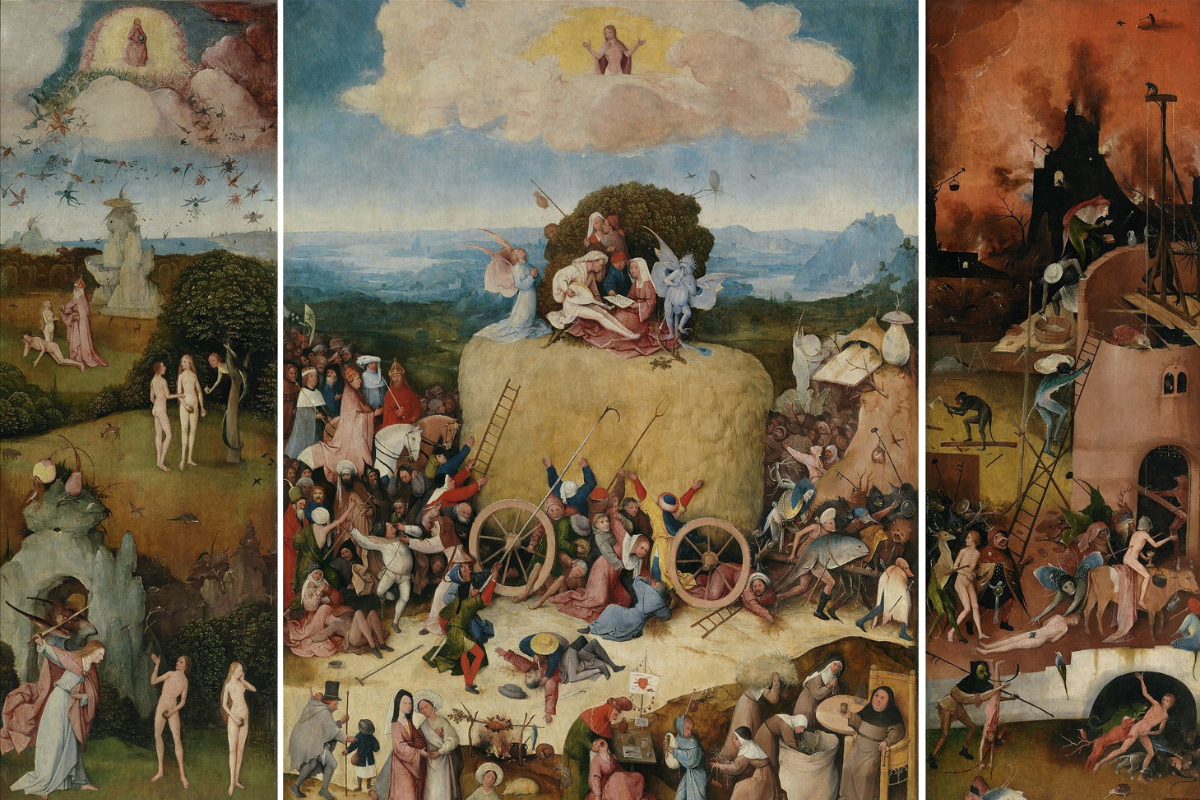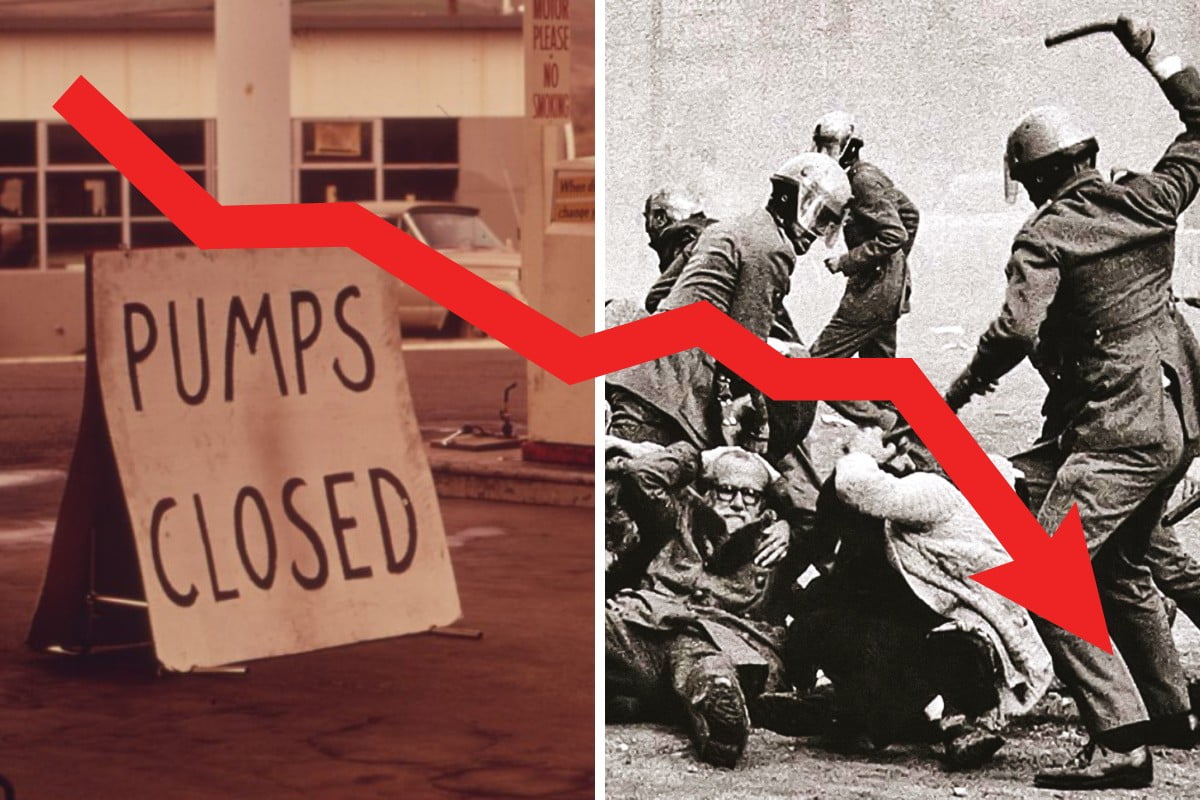Rob Turnbull looks at the rise and fall of the Vikings – a civilisation of seafarers, merchants and traders. But, just as the Vikings had their day, so capitalism has had its. The system has reached its limits. It is time for it to be overthrown and replaced with a socialist society.
The Viking ship museum in Oslo houses ships and artefacts found preserved in Viking burial mounds from around 900AD. The ships and various artefacts are in a remarkable state of repair, having been preserved by the blue clay in which they were buried. The artefacts hold obvious historical importance, as little survives from that era, and provide a detailed insight into Viking culture, technology, methods of production and social structure – a class based social structure.
The pyramid of class society
The ships were adorned with many riches, including silken gowns, totems, gold and weapons (which had mostly been plundered in the decades immediately following the burials), farm/work implements, carts and sleighs, bowls/domestic accoutrements and livestock – and a servant or two also; essentially everything you might need to sustain you on your journey to the afterlife, and pretty much all you’re going to need once you get there.
Some of the individuals who were buried there were of immense importance to their contemporary society, or at least that’s how the museum puts it. However important they were considered by their Viking contemporaries, they were, in the last analysis, just very rich, wealthy, powerful members of the Viking ruling class.
 Just like the pharaohs with their elaborate rituals of mummification and their monumental tombs, such as the Great Pyramids and the Valley of the Dead (and yes, they had their servants buried with them too); and equally the first Chinese emperor, Qin Shi Huang, with his terracotta warriors and horses: I suspect that, historically speaking, these tombs and elaborate rituals attest much less to their ‘importance’ in society, and a great deal more to their obscene private wealth and privileges, their unbounded arrogance, and an infinite well of conceit.
Just like the pharaohs with their elaborate rituals of mummification and their monumental tombs, such as the Great Pyramids and the Valley of the Dead (and yes, they had their servants buried with them too); and equally the first Chinese emperor, Qin Shi Huang, with his terracotta warriors and horses: I suspect that, historically speaking, these tombs and elaborate rituals attest much less to their ‘importance’ in society, and a great deal more to their obscene private wealth and privileges, their unbounded arrogance, and an infinite well of conceit.
For example, take a look at our own Queen, our dear old Lizzy: how ‘important’ is she to you? Has she ever put food on your table? Has she loaned you a few quid when you can’t pay your leccy bill? And who emptied your bins last week or served you on the till at Tesco’s or flipped your Big Mac on your last outing with the kids? On the contrary, the Queen and the rest of her parasitic family actually cost you money – around £300 million per year billed to the British taxpayer, according to the UK pressure group Republic; and that’s before you take into account the British monarch’s obscene personal net-worth, currently estimated at £387 million, and also Queenie’s access to assets belonging to the Crown Estate, such as £10.55 billion worth of real estate.
The role of trading
Getting back to the Vikings, we do know that the majority of them weren’t sword-wielding muscle-bound warriors raping, pillaging, lopping off heads and then guffawing loudly together in the great hall whilst washing down their kills and exploits with improbably huge horns of ale and mead. The Vikings were a trading people, primarily of merchants and farmers. It’s true that in the beginning of their ascendancy they were renowned for raiding and looting (and right through the term of their civilisation they held a fearsome reputation as warriors), but they very quickly learned to trade with the various areas they captured, settled and assimilated.
As trading centres began to spring up in Norway, it wasn’t long before the former system of Earldoms became a centralised state under one king; by 1000AD the Danes and Swedes had also united various tribes and instituted a centralised state. With the proliferation of trade centres rose the need for more organised mass production of clothes, tools and equipment; alongside this was a rapid increase in the division of labour as skills became more specialised.
Material evidence is limited, but we get an impression of a class society comprised of royalty, chieftains (who also acted in a religious capacity), warriors and merchants (the two possibly being one and the same), and of course craftsmen and farmers: all of these “roles” and “castes” having a degree of interaction and crossover, apart from the most privileged layers of course – that is, not every citizen gets the benefit of a ship in a burial mound.
What we do know beyond doubt was that the Vikings were hugely successful merchants and traders who expanded their influence both east and west, as far as the northern tip of America, the Mediterranean, and down to the Black Sea through the rivers of what we now know as Russia. This incredible sphere of influence was only possible thanks to their advanced and pioneering skills as ship builders and sailors. It was through their dominance of the waves, very much like the expansion of the Great British Empire centuries later, that enriched Viking culture with spices and silk from the east and artisanal crafts borrowed from the Celts.
The Vikings had many well established trading centres and settlements. Such centres of trade existed at Kaupang and Borre in Norway, near to the location of the burial mounds, which are a few tens of miles south of the modern capital of Oslo. Swedish Vikings, groups of which were known as the ‘Rus’, travelled east and established settlements in what we now know as ‘Russia’. All in all, these burial mounds constitute an abundant historical source, painting a picture of a highly organised, culturally rich and diverse society based on a very definite class structure.
The Vikings were certainly an aggressive warrior race; early seafaring colonialists; explorers, looking for new lands to plunder for resources and subsequently to conquer, colonise, and ultimately trade. Not unlike the Spanish Conquistadors ploughing their way into South America to satiate their lust for gold; not unlike modern American and British imperialism, murdering a million people in Iraq to satiate its lust for oil and the power, profit and prestige that particular commodity generates. (Never forget the prestige! The capitalists’ thirst for profit and power is only matched by their insidious narcissism!).
Indeed, my own home of Northumberland was invaded and settled by the Vikings. They seemed to like our pretty part of the world and, oddly enough, viewing their ‘shallow-draught’ ships in the Viking museum of Oslo I was startled to see a marked resemblance between them and a Northumbrian fishing boat called a ‘Coble’. The Coble has a broad peculiarly curved hull like an inverted Cupid’s bow, and gives the impression of being wide and a little flat: precisely the qualities that enabled the Viking warriors to sail in shallow rivers and facilitate inland raids – and, to my eyes, identical in principle to the Viking ships. The Coble has a reputation for being stable and reliable on the rough North Sea. It’s fascinating to me to pose the question of the design originating with the Viking settlers over 1000 years ago: those accomplished sailors who built ships capable of crossing the north Atlantic.
The rise and fall of class society
Despite their superiority as traders and shipbuilders, the age of the Vikings eventually came to an end. Civilisations have come and gone since civilisations began, which in fact is only within the last 10,000 years. Humans lived in ‘primitive communist’ – egalitarian, collective, tribal – societies for as much as 100,000 years before ‘civilisation’ even existed. In other words, “civilisation”, is simply the byword for class society. The Inca’s, Ethiopians, Egyptians, Greeks, Persians, Romans, Mongols, Huns, Visigoths, Vandals, Celts, Saxons and, of course, the Vikings, and 100’s more besides: all had their day, and all, without exception, came to an end – some, like the Romans, in a spectacular disintegration befitting the colossal avarice that characterised Roman conquest.
Bourgeois historians love to prattle on about the glory of leaders and the grandeur of royalty, focusing on individuals as if the whole of human history could be put down to the egos, wills and whims of these singular persons who ‘decided’ how society should progress and be organised. But history has its own laws and logic of development, comprised of a series of interconnected events involving class struggles and mass movements of 100’s, 1000’s and 1,000,000’s of individuals pushing and pulling in opposition till one force supersedes the other. We see periods of protraction and relative stability; but eventually the contradictions stack up and the sand pile collapses once more into catastrophe – that is, a revolutionary transformation. One force recedes as another accedes; this is the ebb and flow of history.
Just as the Vikings had their day, so capitalism and its ruling class have had theirs. As the contradictions of the global economy build, amass and agglomerate, the current crisis of overproduction threatens a new catastrophe – a new revolutionary transformation on a global scale.
“Civilisation” is merely a short chapter in the history of human social development; a necessary stepping stone in the evolution of humanity. We are one planet; one race brought together (paradoxically) by the most vicious, inhuman, insensate and vile civilisation ever known to the human race.
The dead end of capitalism
 There was a time when capitalism progressed society; when there was a general development of the forces of production, with scientific advances, technological leaps, and more efficient manufacturing techniques. The demands of the system produced steam power, railways, bridges, the combustion engine, aeroplanes, rockets, large-scale infrastructure, feats of engineering and even beautiful buildings and monuments.
There was a time when capitalism progressed society; when there was a general development of the forces of production, with scientific advances, technological leaps, and more efficient manufacturing techniques. The demands of the system produced steam power, railways, bridges, the combustion engine, aeroplanes, rockets, large-scale infrastructure, feats of engineering and even beautiful buildings and monuments.
But how far have we really progressed in the last 50 or even 100 years? In many respects, apart from computing and the internet, I’d argue that life for the vast majority of ordinary people has not fundamentally changed since the end of the Second World War. Ok, so the combustion engine is a little more refined and you get more miles to the gallon without breaking down every 500 miles (most of the time); and we can now send rockets to the moon and beyond and not just across the North Sea; and, yes, there’s some pretty big bridges now: but we still can’t (or rather, don’t) properly feed a third of the planet; millions of people live without basic sanitation or fresh water; poverty, disease, war and suffering are still on the order of the day.
Capitalism has for a long time reached its highest expression: imperialism. Lenin put this into context in 1916 in his pamphlet Imperialism: the Highest Stage of Capitalism. This manifests itself in an epoch of unadulterated finance capital: gambling on the stock market to make a quick buck; asset stripping companies; ‘downsizing’ and ‘streamlining’; leaching off state institutions like the NHS, treating them as cash-cows as state assets are liquidised and social provision is farmed out to private capital on the basis of ‘competition’ and ‘affordability’. All this on the back of ever increasing ‘fictitious capital’ propagating debt – not only to individuals, but consigning entire nations to a never ending downward spiral of extortion and the economic manipulation and social ruin that comes with it.
Capital is only interested in profit. It cannot bring itself to build anything for the benefit of society. This is not an ideology, but is part of the laws that govern the system itself; the laws that evolve and manifest in and out of the free-market economy: as Lenin clearly outlined, Imperialism is only the logical conclusion of free-market capitalism. Even modern architecture – new buildings such as The Shard – represent the worst in lifeless post-postmodernist functionalism, as do the forests of new skyscrapers in Dubai, Singapore and Las Vegas; not to mention the laughable ‘dolls house’ suburbs of new-build England, where a dearth of imagination expresses itself in the contemporary back-to-back housing of the modern cul-de-sac.
All this is the product of a social system that wants to produce the cheapest, tackiest commodities at the lowest – and ever lower – costs to sell; at ever increasing margins, paid for with ‘money’ that only exists as zeros on a screen. Everything is reduced to a Big Mac.
A society of superabundance
Given the opportunity, humanity could plan the world’s resources and utilise them for its own benefit. First of all, to feed, clothe and house the human race – a natural right to every being born onto this earth. The resources of this planet are not there for the exploitation of a greedy, subhuman, tiny elite of oppressors, slave owners and cowardly bullying thugs: they are there for every man, woman and child to live a peaceful, prosperous, fulfilling life.
The resources of this planet appear finite; but utilising the developed forces of production now at our disposal in order to plan these resources, they are potentially boundless. Even under the brutal boot of capital there is already enough to ‘feed the world’; and while Sir Bob ponses round the planet meeting heads of state, the food mountains of Europe pile high. Tens of millions of units of wine, butter, cheese sitting there disintegrating; whole fields of grapes left to rot on the vines in France because there isn’t a ‘market’ – because if the excess supply was released onto the world, it would cause prices to plummet, therefore slashing profits. Meanwhile, according to Unicef, 22,000 children die of hunger every day.
That’s the stark reality of global capitalism, which is in an epoch of finance capital and endemic crises of overproduction, where the stinking rich squirrel away hordes of cash in the world’s banks, pile up stocks of food, refusing to invest in much needed infrastructure, housing, healthcare and social provision, whilst ignoring the abject poverty of billions worldwide.
Capitalism has developed the forces of production to a level where a communist society of super abundance is nothing more than a few short generations away. Organised and militant, the social weight of the international working class could sweep away, in a tranquil instant, the unending horror of capitalism and imperialism.
Never in our history has the conscious intervention of the human race been more necessary or critical: imperialism has brought us to the brink of environmental meltdown and the threat of nuclear annihilation. Now is the time – for revolution, socialism and the emancipation of humanity.






